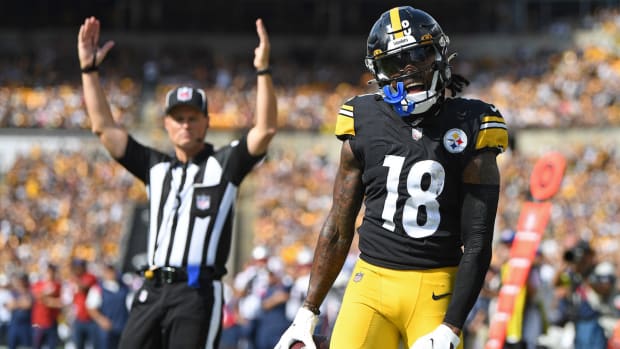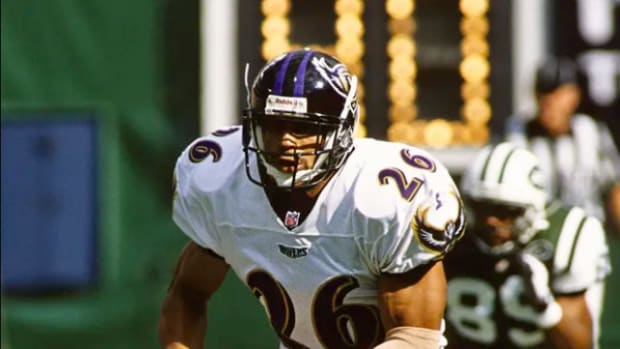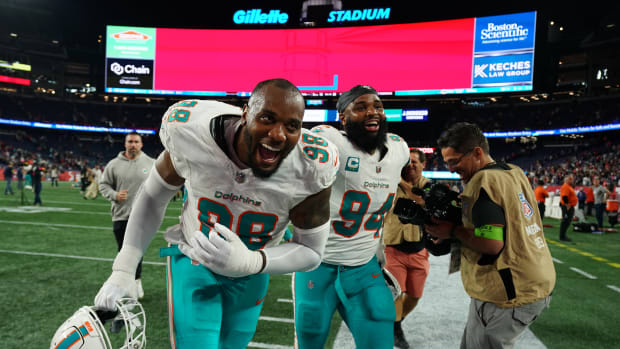Free Agency 2019 Still Hasn't Changed the NFL's Contract Model
As someone with a decade each on both sides of the business of football—representing players and working with teams—I’ve used my media pulpit for the last several years to scream from the mountaintops about the folly that goes on every year with reporting and discussion of NFL contracts. Alas, even with a decent following and a respected voice, I have failed again as headlines blare about NFL free agent contracts worth (illusory) amounts of $50 million, $60 million or even $80 million.
In the NBA, MLB or even the NHL, a contract that says it is worth $80 million is actually worth $80 million. In contrast, even for the most leveraged NFL players—among those are the free agents who signed last week—a contract with secure money beyond the early, low-risk years of the deal is truly rare. Indeed, virtually every NFL free agent contract signed so far subjects the player to being released in 2020 or 2021 with the team owing no money. Zero.
Remember a year ago when Kirk Cousins secured a fully guaranteed contract and some thought we would see more fully guaranteed veteran contracts? As I said at the time, good luck with that. Now a year later, even the most leveraged players and top contracts allow teams to exit before the player has even entered the third year of the deal.
I know the argument: “Those deals have so much cash and cap in the first two years; the team would never cut them after that!” Of course, if that were true, teams would be willing to guarantee after the second year, but few do. Teams hide behind precedent (I know, I did for 10 years) and continue to be able to negotiate low-risk contracts even in this one week a year where players have the leverage. For example, the 49ers’ free agent contracts, even with the highly leveraged Dee Ford, are essentially one-year deals. Remember when Richard Sherman was widely criticized for negotiating the same without an agent?
Also, remember when Malik Jackson signed a five-year contract worth $80 with the Jaguars, and when Ryan Tannehill signed a five-year contract worth $90 million with the Dolphins? Those contracts have turned to dust with the players having received a fraction of those amounts. In a piece where I was consulted, The Ringer’s research showed more five-year NFL contracts end after one year than after five years.
So, you ask: What will it take for players to achieve more secure contracts? Well, the answer is twofold, with responsibility both of individual agents and the collective agent for players. Individual agents need to push the envelope on guarantees for players with leverage, pushing past certainly two, and hopefully three years of secure wages. Agents need to create that precedent and shift the advantage in those years toward the players and away from the teams.
As for the collective agent, the NFLPA, it needs to prioritize augmenting minimum spending requirements of the CBA. The current CBA requirement of spending minimums of 89% of the salary cap over a four-year period allows teams way too much latitude; several team executives have admitted that to me. Were the union to achieve, say, a 95% of cap minimum spending threshold over a two-year inspection period (instead of four), player spending would rise significantly, as would leverage toward guaranteed contract years. Of all the issues raised about NFLPA priorities in the coming CBA negotiations—and it’s a long list—this one has to be at or near the top of the list.
Now as for better management of contracts from the team side…
Steelers and Giants cap management mistakes a lesson for all
Last week’s two blockbuster trades involving Antonio Brown and Odell Beckham Jr. demonstrate the need for teams to, in my opinion, move away from structuring big contracts with signing bonuses, which are prorated over the life of the contract for cap purposes.
The Steelers, after several negotiations and renegotiations of Brown’s contract, now take on an eye-popping $21 million in accelerated cap charges for a player who is now playing for the Raiders. Even worse, Beckham was supposed to be in his fifth year option right now, but the Giants tore up that option year and replaced it with a top-of-market contract including a $20 million signing bonus. Now, not only did the Giants throw away $20 million, but also 80% of that amount, $16 million, now accelerates into the Giants’ 2019 cap. (Another team, the Dolphins, do not escape blame here either, taking on almost $18.5 million in dead money after trading their one-time future quarterback Ryan Tannehill.)
As someone who managed an NFL cap for 10 years, I strongly believe that a better way to structure NFL player contracts is to avoid signing bonus proration, using roster bonus and guaranteed salary to match cash and cap as closely as possible. Teams that do this are most flexible for the present and future and able to “get out” of their deals seamlessly. Matching cash and cap requires ample cap room, which demands quality scouting, good decisions on contracts and perhaps some disciplined spending for a period of time. But once a team is “ahead of the curve,” it never has to worry about the cap-killing decision to move on from a star player like Brown or Beckham.
Perhaps the best example of a well-managed contract may be last year’s monster deal between the 49ers and Jimmy Garoppolo, a deal with a massive first-year cash number of $42 million. The 49ers could have loaded up on signing bonus and pushed out their cap issues, as most teams have with mega contracts for quarterbacks, but they chose—wisely—to front load the cap hit with a $37 million 2018 cap number. And this year, the 49ers signed Kwon Alexander to (ostensibly) a $54 million contract that will only leave $3 million of dead money if they move on after one season. Further, the Buccaneers just cut Vinny Curry and traded DeSean Jackson with zero dead money remaining, having matched cash and cap on those deals. The Raiders can move on from Tyrell Williams’s four-year contract after a year with zero dead money charges after this year. It can be done.
The credit card mentality of signing bonus proration was a concept that smart teams used skillfully when implemented 25 years ago back when there was a team salary cap of $35 million. Now, smart teams are avoiding it as much as possible, in part to avoid being stuck in a position like the one the Steelers and Giants find themselves in after moving on from mega-contracts.
Brown, Beckham and Bell better off? We’ll see
Finally, let this line sink in: Three of the best players in the NFL now think they’re better off with the Raiders, Jets and Browns, compared to being with the Steelers and the Giants. But…what if they’re not?
The Raiders had an awful season; they traded Khalil Mack and Amari Cooper, traded a third-round pick for Martavius Bryant’ fired their general manager, paid Jordy Nelson a $3.6 million roster bonus and then cut him, were recently sued by the city they’re playing in and are moving to a new city that may not care about supporting a local football team. And the Browns, well, they have put the fun in dysfunction. Their owner’s company has faced criminal charges, and he goes through coaches and front office executives the way Pete Carroll goes through Chicklets. Yes, new front offices are bringing excitement, but do we really think Brown and Beckham are going to play out their contracts with these teams? Check back in a couple years, if not sooner.
Speaking of which, a final word on the folly of Le’Veon Bell’s strategy over the past year. Readers of this space know my experiences taught me how flawed a plan Bell had in forfeiting $14.5 million the Steelers were willing to pay him last year: (1) As an agent I could have never advised a client, especially a running back, to turn his back on $835,000 a week, and (2) As a former team executive, I never ascribed to Bell’s belief that his lack of usage in 2018 would dramatically bump up contract offers in 2019.
And, of course, it didn’t, as the Jets—Bell’s new employer that seems to remake itself every year—may have been bidding against themselves. Now, whether Bell is making $25, $26, or $27 million in the first two years of his Jets’ contract, his strategy will net $27 million over three years (2018-2020), a $9 million average per year on par with running backs such as Jerick McKinnon and Devonta Freeman. Bell and his agent may feel like they “stuck it” to the Steelers; but they really “stuck it” to themselves.
From the team side, for reasons detailed above, trading Brown and Beckham made no business sense for the Steelers and Giants. However, they felt their team was better off without those extraordinary talents than with them. Brown and Beckham must have been affecting (and infecting) team chemistry so much that the Steelers and Giants felt they had to go, damn the cash and cap consequences and inequitable trade compensation. And while fans and media bash the teams, they are probably sitting in their offices high-fiving and saying: “Thank goodness he’s gone.”
The business of sports is not just business; it’s personal.
• Question or comment? Email us at talkback@themmqb.com.




































